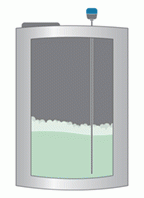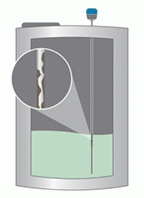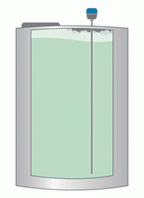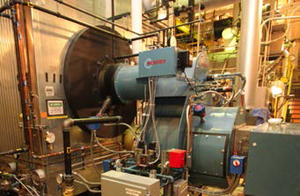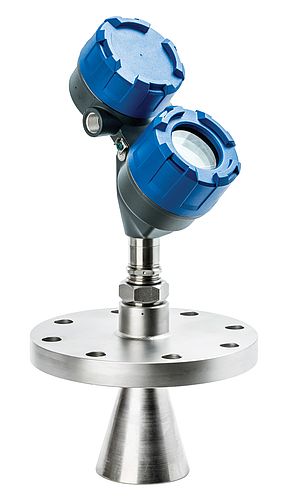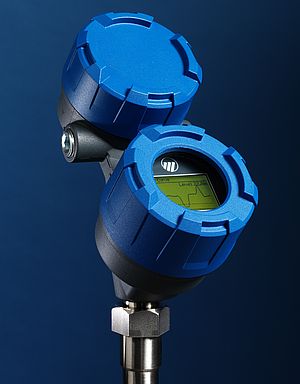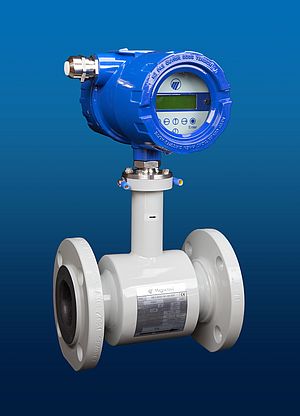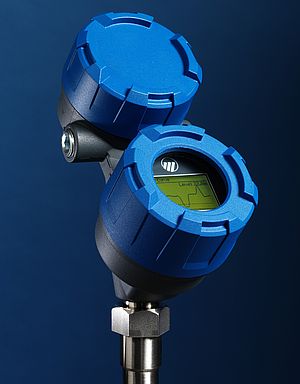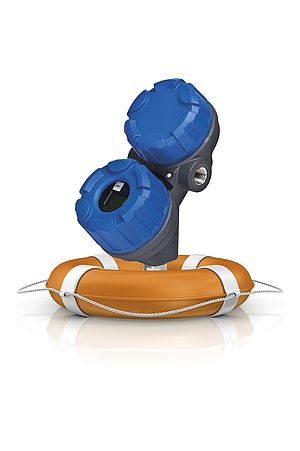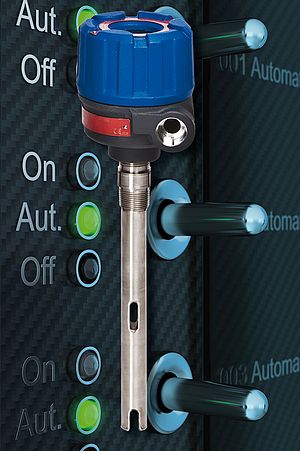Foaming
Foam is a dynamic mixture of gas and liquid which can present difficulties with traditional level devices; that is, some of the most widely accepted technologies in the market.
The foam thickness, density, bubble size and effective dielectric constant (most of which continuously vary during a process) can impact the level measurement.
There are many reasons why foam can be present in a tank, including the introduction of air/gas into the product being measured or the operation of agitators/mixing blades. Regardless of the source, care must be taken when choosing a level measurement technology to prevent unnecessary errors or loss of measurement.
Depending on the level transmitter or switch technology, as well as the properties of the foam, the instrument may be able to detect the foam, it may ignore the foam and only measure the liquid level, or it may lose the signal altogether in the foam layer. There are many reasons why foam can be present in a tank. This includes the product being manufactured, the use of agitators/mixing blades, or if there is air/gas introduced. Regardless of the reason, care must be taken in choosing level instrumentation to prevent unnecessary errors or loss of measurement.
Oftentimes facilities will sacrifice tank capacity by reducing the maximum allowable level to accommodate dynamic foam conditions. Deploying the right technology for proper detection and monitoring can allow additional headspace for dynamic foam conditions. Proper monitoring of the top foam layer provides access to and utilization of a tank’s entire capacity. No longer do you have to add additional tank capacity as a buffer to optimize production throughput. With large tanks that are being severely underfilled, this can result in considerable productivity gains.
Corrosion
There are a wide range of chemicals produced including acids, buffers, ammonia, chlorine and solvents. Some chemicals are corrosive enough to destroy contacting technologies or can crystallize and coat probes to render them ineffective. There are options to coat the probe to assist in corrosive environments along with a variety of materials of construction. However, there may still be a preference to move to a non-contacting technology.
Coating/Buildup
Although GWR has many advantages, a contacting technology will always be subject to viscous or sticky process fluids that can coat the probe. Advanced diagnostics should be present in the device to detect and monitor build-up on the probe. This allows the user to plan cleaning processes before a measurement problem occurs. There are also options to coat the probe to reduce material buildup or assist in corrosive environments (flushing ports can also be provided). However, there may still be a preference to move to a non-contacting technology for applications with coating, corrosion or installation concerns.
Overfill
Often when choosing a level measurement technology, the liquid surface takes precedence, with foam measurement only given secondary attention. This leads to foam-overs. Repeated foam-over conditions, if left unchecked, can obstruct the passage to overflow vessels and flood the containment basin/system. Expensive cleanup, environmental impact and lost product are the result of less than adequate level controls on foam.
The best practices long established in the Oil & Gas industry through standards such as API 2350 may be applied to the Chemical Processing industry. GWR has been a reliable technology for decades in preventing tank overfill of hazardous liquids; including overfill capable probes to allow direct measurement of liquid level from the bottom of the probe up to the process connection without relying on algorithms. In Chemical, both liquid overfills and foam-overs are possible depending on the process.
Non-contact radar is another popular technology for applications with foaming and other process challenges. A specialty chemical facility encountered numerous level control when automating the operations of ten blending tanks. The dual-level mixing blades coupled with vortex breakers and sticky process fluids was a challenge for even the most robust technologies. In this scenario the right technology was selected, but at the wrong frequency. Since frequency and wavelength have an inverse relationship, longer wavelengths (lower frequency) are better suited for applications where the signal must penetrate through foam and vapors. Understanding this relationship is key when deploying non-contact radar and can prevent process headaches. This facility switched to a lower frequency model and the issues were resolved.
At Magnetrol, because of their long history of leading the level measurement industry, they can provide their customers the depth of application and technology expertise needed to mitigate foam issues, along with other application challenges the chemical and other processing industries face. We offer a full range of contact and non-contact level instrumentation, including the industry’s most reliable GWR. To learn more, you can download their new "Foam in the field" white paper or visit the company's website at magnetrol.com.


